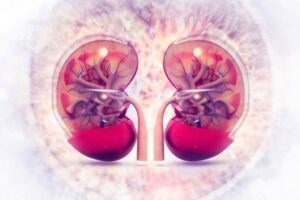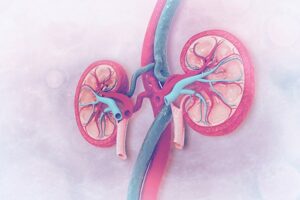Introduction
For patients with end-stage renal disease, kidney transplantation (KT) is considered the gold standard of care. Furthermore, receiving a pre-emptive KT has been shown to improve recipient and graft survival rates. The vast majority of transplant candidates, however, require prolonged periods of dialysis before being transplanted due to an overwhelming discrepancy between the organs available and the patients on the transplant waiting list. Peritoneal dialysis (PD) and hemodialysis (HD) have long been regarded as rival renal replacement therapies (RRT). Evidence suggesting that a more individualised and flexible approach may be more appropriate has recently cast doubt on this dualistic vision.
In fact, in order to achieve the best results, it is frequently necessary to make tailored and well-planned changes between different RRT modalities based on the patient’s needs and characteristics. While home HD is still being studied in this setting, current data suggests that in patients awaiting a KT, PD is preferable to in-center HD. Superior quality of life, longer preservation of residual renal function, lower incidence of delayed graft function, better recipient survival, and lower cost have all been demonstrated in this population.
Patient Survival on Renal Replacement
Therapy
Patients with ESRD suffer a higher prevalence of cardiovascular disease (CVD), greater incidence of major cardiovascular events, and increased all-cause mortality than the general population. These factors can significantly influence the risk of suspension from the TWL and jeopardize recipient and graft survival after transplant. Over the last two decades, we have witnessed a progressive improvement of dialysis-related outcomes, particularly with home-based modalities. As shown by the US Renal Data System (USRDS) Annual Reports in a population of 650000 subjects on RRT, prevalent patients receiving PD had their survival probabilities doubled from 1996 to 2002 and their adjusted all-cause mortality rates decreased from 164.2 to 131.5 per thousand patient-years from 2009 to 2018 . Such remarkable improvement was evident also among older patients with hypertension or diabetes.
Post-Transplant Recipient and Allograft
Survivals
It is demonstrated that KT provides superior life expectancy and QoL than dialysis. Nonetheless, returning to dialysis after a failed transplant entails a greater risk of death than starting RRT for the first time. Therefore, preserving graft function as much as possible is vital for long-term patient survival. Several studies have investigated the impact of pre-transplant dialysis modality on post-transplant outcomes, with mixed results. In the early 1990s, a retrospective analysis on 500 first deceased-donor KT showed no differences between ICHD and PD in short-term patient (88% vs 87%) and graft survival (67% vs 66%) rates. Overall, current literature demonstrates that pre-transplant PD offers superior or at least equivalent recipient and graft survival rates compared to ICHD. Even though there is evidence that HHD represents a valuable option for many patients with ESRD, the lack of information regarding KT outcomes in recipients previously treated with HHD does not allow to compare HHD and PD. Due to their methodological limitations, available studies cannot confirm any causality effect between pre-transplant PD and post-transplant outcomes. As a consequence, the exact mechanisms behind the theoretical survival advantage associated with PD remain undetermined. To date, a better RRF at the time of transplant and a reduced incidence of DGF have been recognized as the most plausible contributing factors.
Delayed Graft Function
Widely accepted definitions of DGF are the need for dialysis during the first week after transplant or a decrease in serum creatinine concentration (SCr) less than 50% from baseline, by post-operative day three (T1/2 SCr). DGF is a well-recognized risk factor for perioperative surgical complications, rejection, and premature transplant loss. Furthermore, the occurrence of DGF can be used as a surrogate marker of late transplant outcomes. In particular, it has been demonstrated that the duration of DGF represents an independent predictor of long-term allograft function and survival. As a matter of fact, recent data indicate that graft function is more likely affected by intra-operative and early post-operative fluid loads rather than by chronic hydration. The RRF at the time of transplant may also play a role. Besides, there is now evidence that over-hydration is associated with adverse outcomes among PD and transplant patients.
Residual Renal Function at the Time of
Transplant
Many patients with chronic kidney disease (CKD) experience a progressive loss of glomerular filtration rate (GFR) and urinary output. The latter event may eventually lead to decreased bladder capacity, detrusor over-activity, and impaired bladder emptying. It is demonstrated that KT recipients with an atrophic or dysfunctional bladder are at higher risk of prolonged catheterization, urinary leakage, and severe vesicoureteral reflux than those with normal bladder volume and function. Importantly, dialysis vintage represents the most relevant predisposing factor for irreversible loss of RRF and atrophic bladder. Further benefits arising from RRF preservation are decreased systemic blood pressure , reduced left ventricular hypertrophy, increased sodium removal , improved fluid balance, lower serum b2-microglobulin levels, better nutritional status , and lower circulating inflammatory markers. Additionally, RRF facilitates the achievement of adequacy targets and may contribute to controlling serum phosphate, uric acid, bicarbonate, and cholesterol levels . An association between RRF and DGF rate has been established. However, the fact that most patients receiving PD exhibit preserved urinary output at the time of dialysis initiation does not allow to rule out possible selection bias.
Conclusions
Historically, ICHD has been the preferred RRT modality for most ESRD patients awaiting a KT. Over the years, several studies have demonstrated that the perceived advantages of ICHD over PD, in this particular population, are not supported by solid evidence. On the contrary, a critical analysis of the literature seems to suggest that PD may be particularly beneficial for transplant candidates. Demonstrably, patients on the TWL who receive PD have reduced all-cause mortality, improved QoL, and reduced costs compared to those on ICHD. Also, properly delivered PD allows avoiding vascular access placement and fistula-related cardiocirculatory overload. After transplant, recipients who were on PD benefit from lower incidences of DGF and fewer peri-operative urological complications. However, further and properly designed studies are needed to confirm that these encouraging results eventually translate into better long-term graft or recipient survival. More comparative data on HHD is also warranted.
References:
1. Wolfe, R.A.; Ashby, V.B.; Milford, E.L.; Ojo, A.O.; Ettenger, R.E.; Agodoa, L.Y.; Held, P.J.; Port, F.K. Comparison of mortality in all patients on dialysis, patients on dialysis awaiting transplantation, and recipients of a first cadaveric transplant. N. Engl. J. Med. 1999, 341, 1725–1730.
2. Ojo, A.O.; Hanson, J.A.; Meier-Kriesche, H.U.; Okechukwu, C.N.;Wolfe, R.A.; Leichtman, A.B.; Agodoa, L.Y.; Kaplan, B.; Port, F.K. Survival in recipients of marginal cadaveric donor kidneys compared with other recipients and wait-listed transplant candidates. J. Am. Soc. Nephrol. 2001, 12, 589–597.
3. Merion, R.M.; Ashby, V.B.; Wolfe, R.A.; Distant, D.A.; Hulbert-Shearon, T.E.; Metzger, R.A.; Ojo, A.O.; Port, F.K. Deceased-donor characteristics and the survival benefit of kidney transplantation. JAMA 2005, 294, 2726–2733.
4. Zompolas, I.; Peters, R.; Liefeldt, L.; Lehner, L.J.; Budde, K.; Ralla, B.; Goranova, I.; Maxeiner, A.; Lerchbaumer, M.H.; Marticorena Garcia, S.R.; et al. Outcomes of Deceased Donor Kidney Transplantation in the Eurotransplant Senior Program with A Focus on Recipients 75 Years. J. Clin. Med. 2021, 10, 5633.
5. Ghanta, M.; Jim, B. Renal Transplantation in Advanced Chronic Kidney Disease Patients. Med. Clin. N. Am. 2016, 100, 465–476.
6. Kasiske, B.L.; Snyder, J.J.; Matas, A.J.; Ellison, M.D.; Gill, J.S.; Kausz, A.T. Preemptive kidney transplantation: The advantage and the advantaged. J. Am. Soc. Nephrol. 2002, 13, 1358–1364.
7. Meier-Kriesche, H.U.; Kaplan, B. Waiting time on dialysis as the strongest modifiable risk factor for renal transplant outcomes: A paired donor kidney analysis. Transplantation 2002, 74, 1377–1381.
8. Fu, R.; Kim, S.J.; de Oliveira, C.; Coyte, P.C. An instrumental variable approach confirms that the duration of pretransplant dialysis has a negative impact on the survival of kidney transplant recipients and quantifies the risk. Kidney Int. 2019, 96, 450–459.
9. Naylor, K.L.; Kim, S.J.; Kuwornu, J.P.; Dixon, S.N.; Garg, A.X.; McCallum, M.K.; Knoll, G.A. Pre-transplant maintenance dialysis duration and outcomes after kidney transplantation: A multicenter population-based cohort study. Clin. Transplant. 2021, 12, e14553.
10. U.S. Renal Data System. USRDS 2020 Annual Data Report: Epidemiology of Kidney Disease and End-Stage Renal Disease in the United States; National Institutes of Health, National Institute of Diabetes and Digestive and Kidney Diseases: Bethesda, MD, USA, 2020.
11. Kainz, A.; Kammer, M.; Reindl-Schwaighofer, R.; Strohmaier, S.; Petr, V.; Viklicky, O.; Abramowicz, D.; Naik, M.; Mayer, G.; Oberbauer, R.Waiting Time for Second Kidney Transplantation and Mortality. Clin. J. Am. Soc. Nephrol. 2022, 17, 90–97.
12. Scribner, B.H.; Caner, J.E.; Buri, R.; Quinton,W. The technique of continous hemodialysis. Trans. Am. Soc. Artif. Intern. Organs. 1960, 6, 88–103.
13. Murdeshwar, H.N.; Anjum, F. Hemodialysis. In StatPearls [Internet]; StatPearls Publishing: Treasure Island, FL, USA, 2022.
14. Vidt, D.G.; Somerville, J.; Schultz, R.W. A safe peritoneal access device for repeated peritoneal dialysis. JAMA 1970, 214, 2293–2296.
15. Sachdeva, B.; Zulfiqar, H.; Aeddula, N.R. Peritoneal Dialysis. In StatPearls [Internet]; StatPearls Publishing: Treasure Island, FL, USA, 2022.
16. Guillou, P.J.; Will, E.J.; Davison, A.M.; Giles, G.R. CAPD–A risk factor in renal transplantation? Br. J. Surg. 1984, 71, 878–880.
17. Shapira, Z.; Shmueli, D.; Yussim, A.; Boner, G.; Haimovitz, C.; Servadio, C. Kidney transplantation in patients on continuous ambulatory peritoneal dialysis. Proc. Eur. Dial. Transplant. Assoc. Eur. Ren. Assoc. 1985, 21, 932–935.
18. Donnelly, P.K.; Shenton, B.K.; Lennard, T.W.; Proud, G.; Taylor, R.M. CAPD and renal transplantation. Br. J. Surg. 1985, 72, 819–821.
19. Apel, C.; Hornig, C.; Maddux, F.W.; Ketchersid, T.; Yeung, J.; Guinsburg, A. Informed decision-making in delivery of dialysis: Combining clinical outcomes with sustainability. Clin. Kidney J. 2021, 14 (Suppl. 4), i98–i113.





